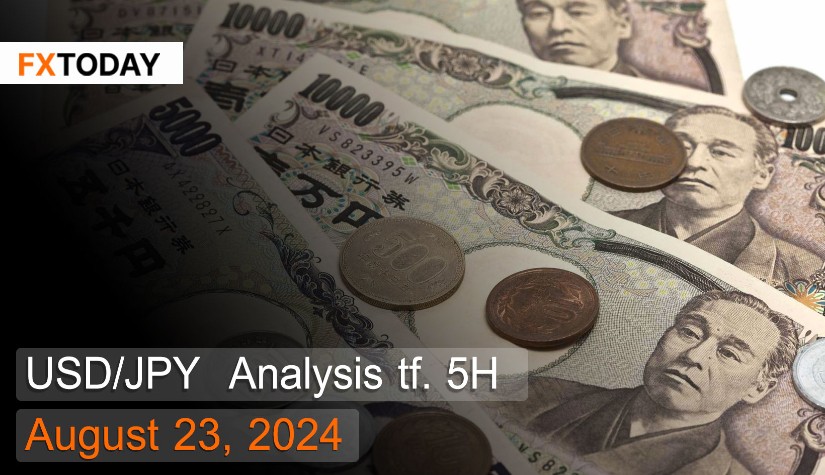Japan's economy continues to show potential for growth.
Japan's GDP expanded by 0.8% quarter-on-quarter in Q2 2024, surpassing market expectations of 0.5%. This growth was driven by private consumption, which accounts for more than half of the economy. Additionally, average wages in the country increased by 5.17%, marking the highest level in over 30 years, further boosting household consumption. Meanwhile, government spending continued to rise as the government maintained support for certain household expenses.
Japan's trade deficit surged to 621 billion yen in July, marking the fifth deficit this year, as imports grew much faster than exports. Imports to Japan grew by 16.6% year-on-year, with natural fuel imports, particularly petroleum and LNG, increasing by more than 15.5%. Additionally, machinery purchases rose by 13.4%, driven by demand for computers and other equipment.
On the other hand, Japan's exports increased by 10.3% year-on-year, making it the eighth consecutive month of export growth. This was supported by the recovery in the automotive sector and the depreciation of the yen, which benefited most export businesses. Machinery exports increased by 5.0% due to continued demand for semiconductor manufacturing equipment, while exports of production-related goods, such as iron and steel, rose by 10.7%.
Inflation in Japan remained stable at 2.8% in July, marking the third consecutive month of stability and exceeding the central bank's target of 2%. Electricity prices surged rapidly as the Japanese government began reducing its support budget, leading to a sharp increase in production costs for most industries. Companies were forced to pass on these costs to consumers, which could push inflation higher. Meanwhile, food prices continued to rise, further impacting household expenses.
The Bank of Japan (BoJ) reaffirmed its intention to raise interest rates further if inflation sustains at the 2% target. However, investors remain skeptical that the central bank will hike rates anytime soon. Governor Kazuo Ueda stated that the central bank continues to monitor financial market volatility following its first rate hike decision. The yen's depreciation and resulting market fluctuations could impact the central bank's inflation forecasts, as a weaker yen increases the cost of imports.
The yield on Japan's 10-year government bonds surged to 0.9%, indicating that the central bank may adjust monetary policy further if economic forecasts remain on track. This suggests that the central bank is willing to raise interest rates again.
Techical analysis data (5H)
Resistance: 146.01, 146.8, 147.33
Source: Investing.com
Buy/Long 1: If the price touches support in the price range of 144.16 - 144.69 but cannot break the support at 144.69, you may set a TP at approximately 146.8 and SL at around 143.37 or according to your acceptable risk.
Buy/Long 2: If the price breaks the resistance in the price range of 146.01 - 146.8, you may set a TP at approximately 147.33 and SL at around 144.16 or according to your acceptable risk.
Sell/Short 1: If the price touches resistance in the price range of 146.01 - 146.8 but cannot break the resistance at 146.01, you may set a TP at approximately 144.16 and SL at around 147.33 or according to your acceptable risk.
Sell/Short 2: If the price breaks the support in the price range of 144.16 - 144.69, you may set a TP at approximately 143.37 and SL at around 146.8 or according to your acceptable risk.
Pivot point August 23, 2024 10:20 PM. GMT+7
|
Name
|
S3
|
S2
|
S1
|
Pivot Points
|
R1
|
R2
|
R3
|
| Classic | 143.37 | 144.16 | 144.69 | 145.48 | 146.01 | 146.8 | 147.33 |
| Fibonacci | 144.16 | 144.66 | 144.98 | 145.48 | 145.98 | 146.3 | 146.8 |
| Camarilla | 144.86 | 144.98 | 145.1 | 145.48 | 145.35 | 145.47 | 145.59 |
| Woodie's | 143.25 | 144.1 | 144.57 | 145.42 | 145.89 | 146.74 | 147.21 |
| DeMark's | - | - | 144.43 | 145.35 | 145.75 | - | - |
















